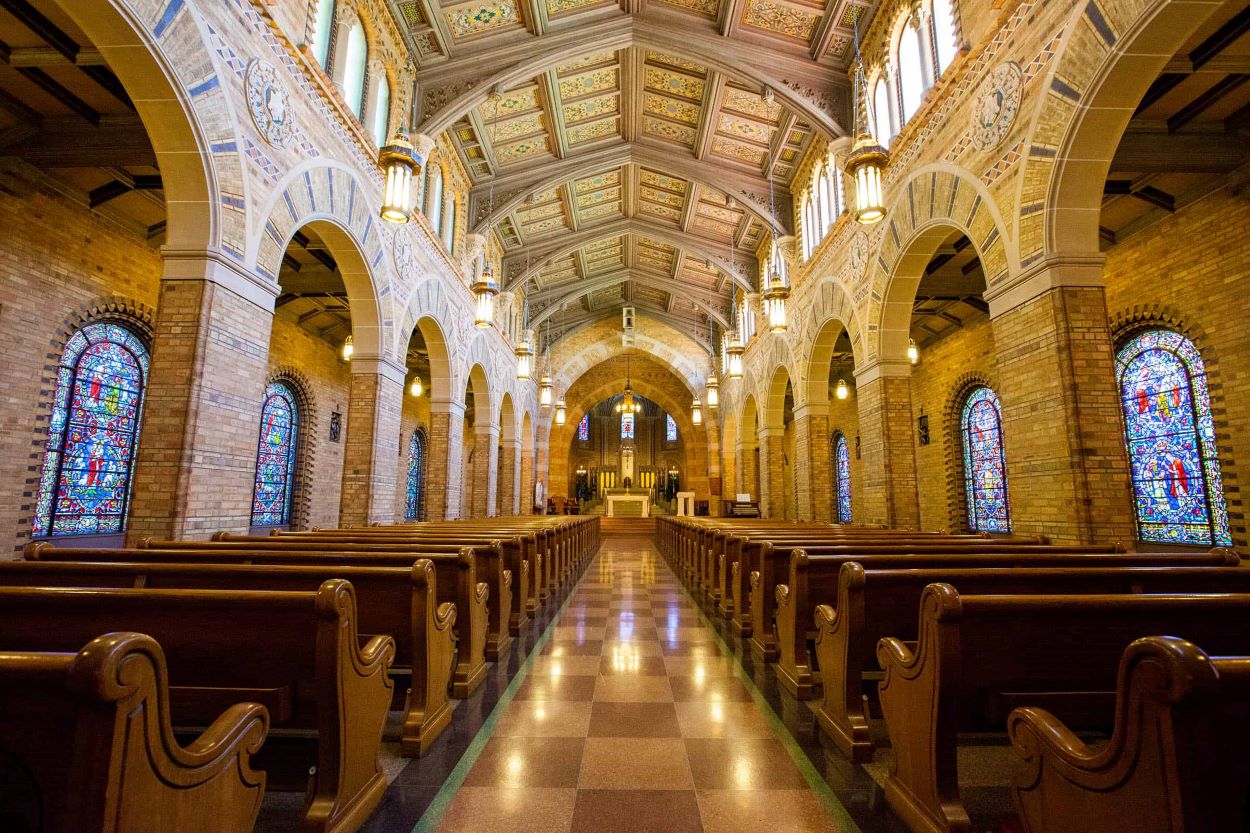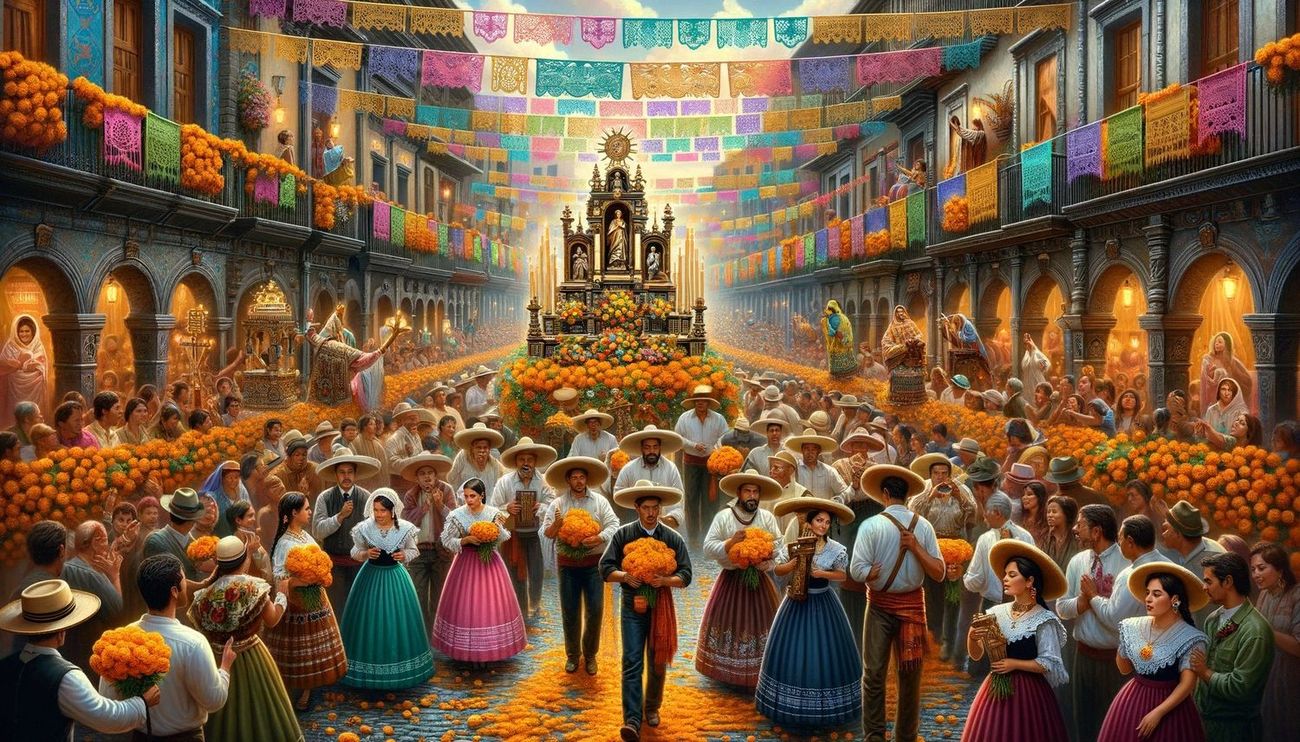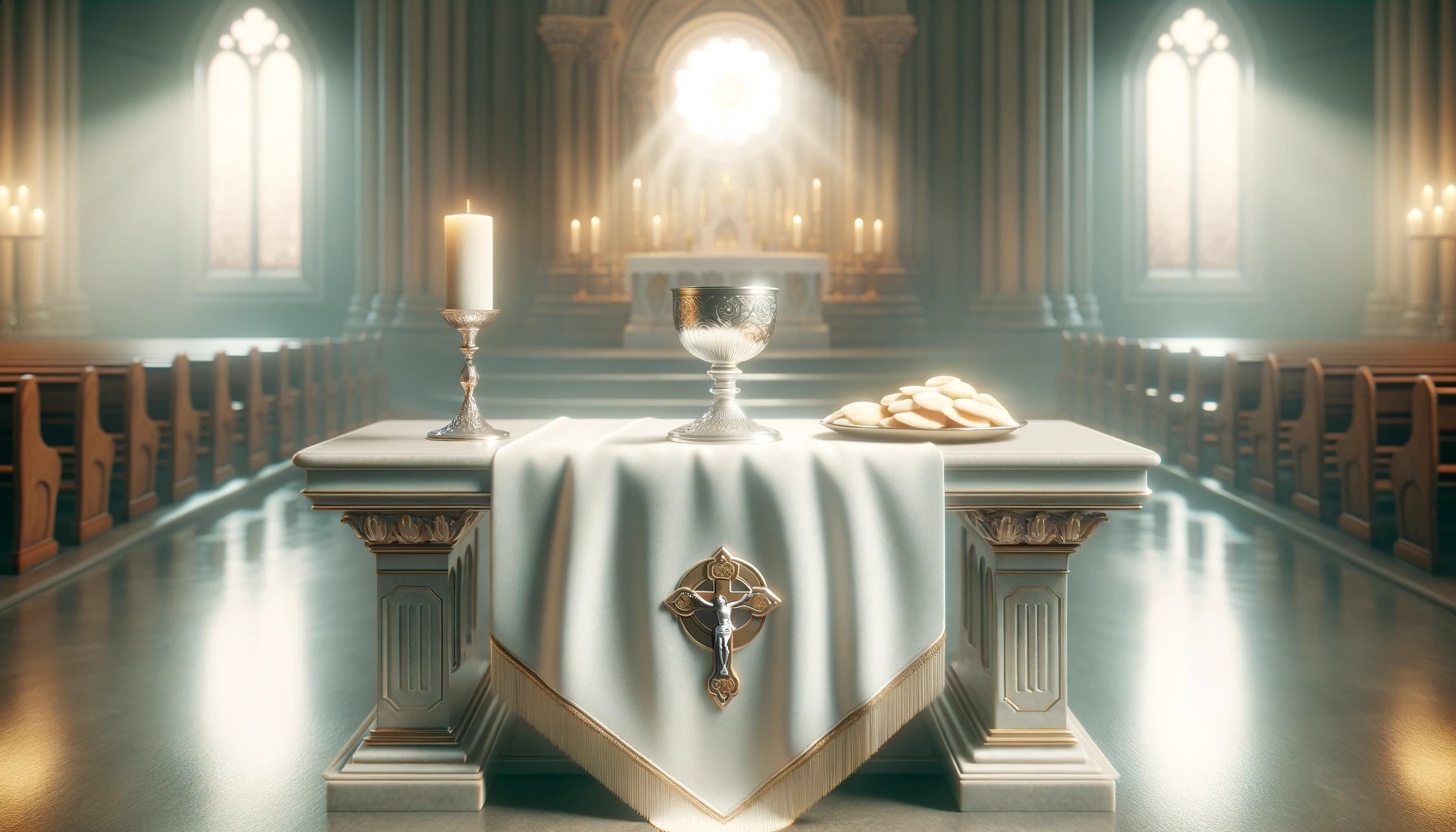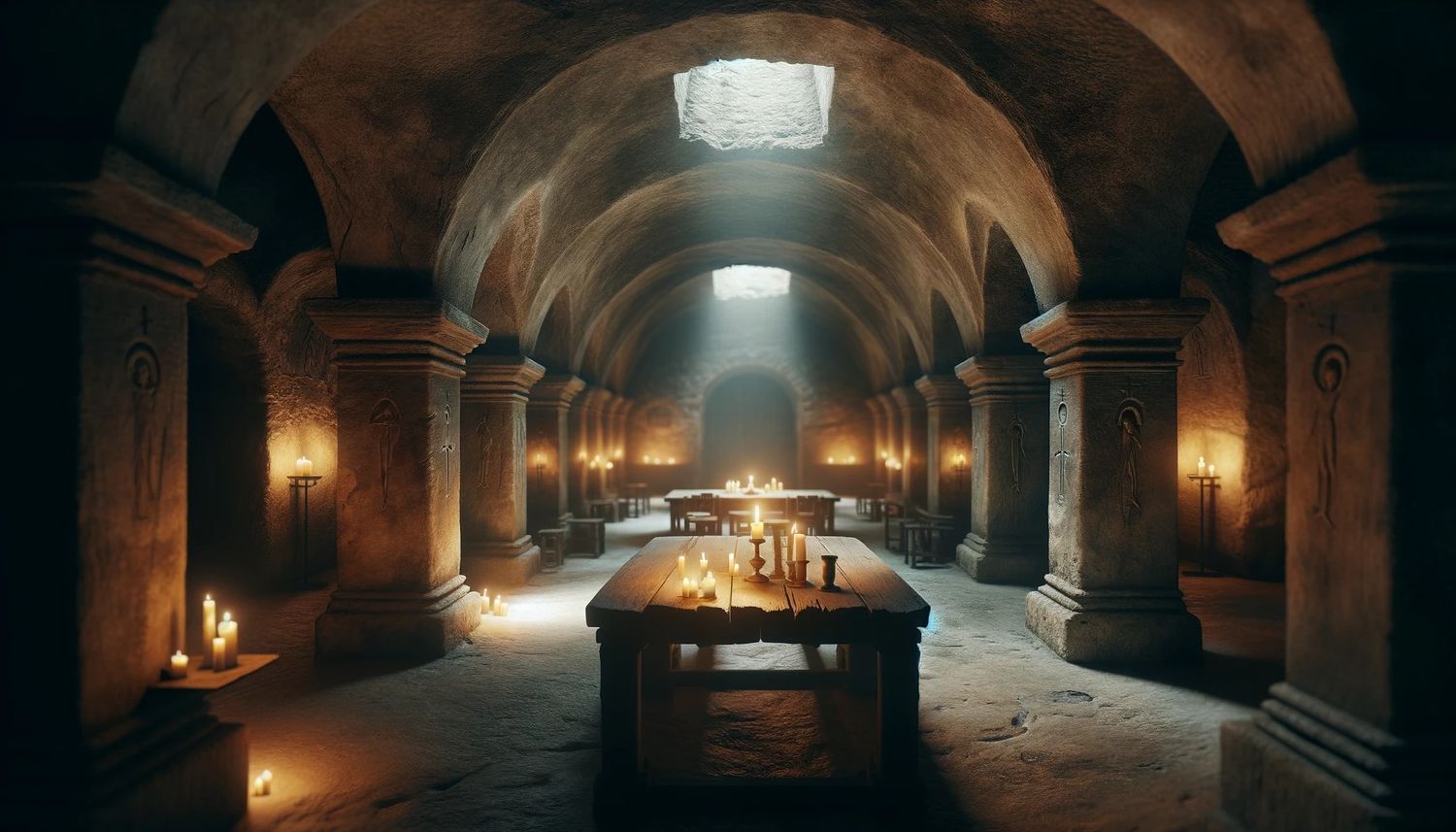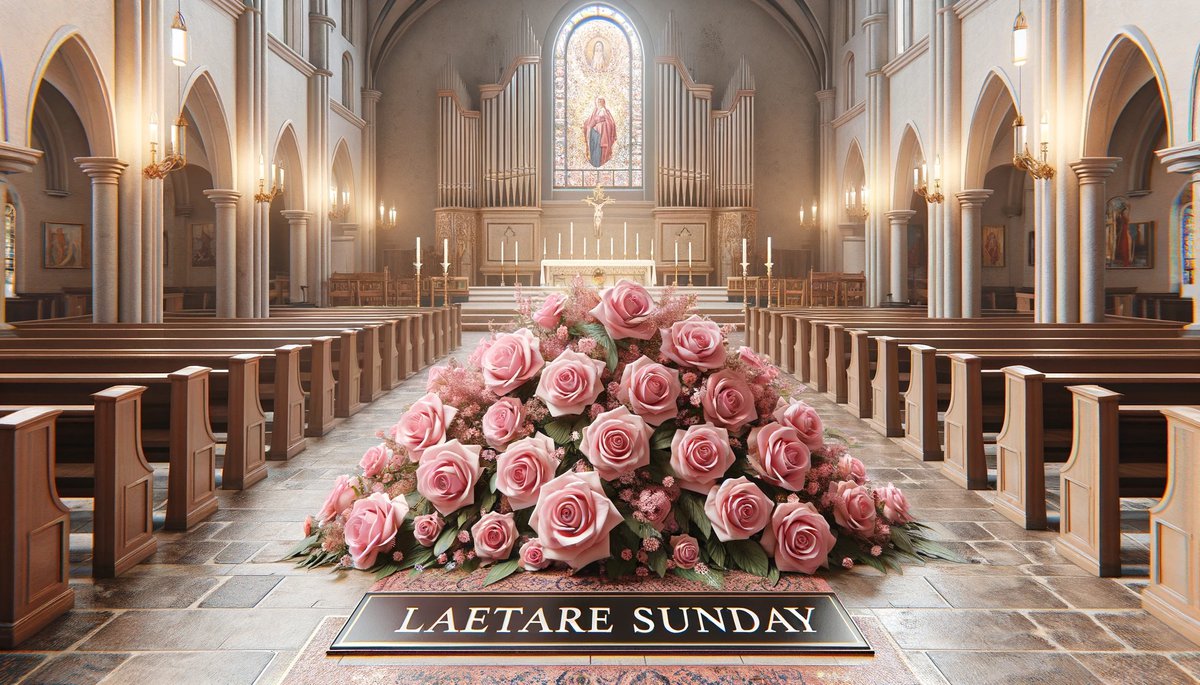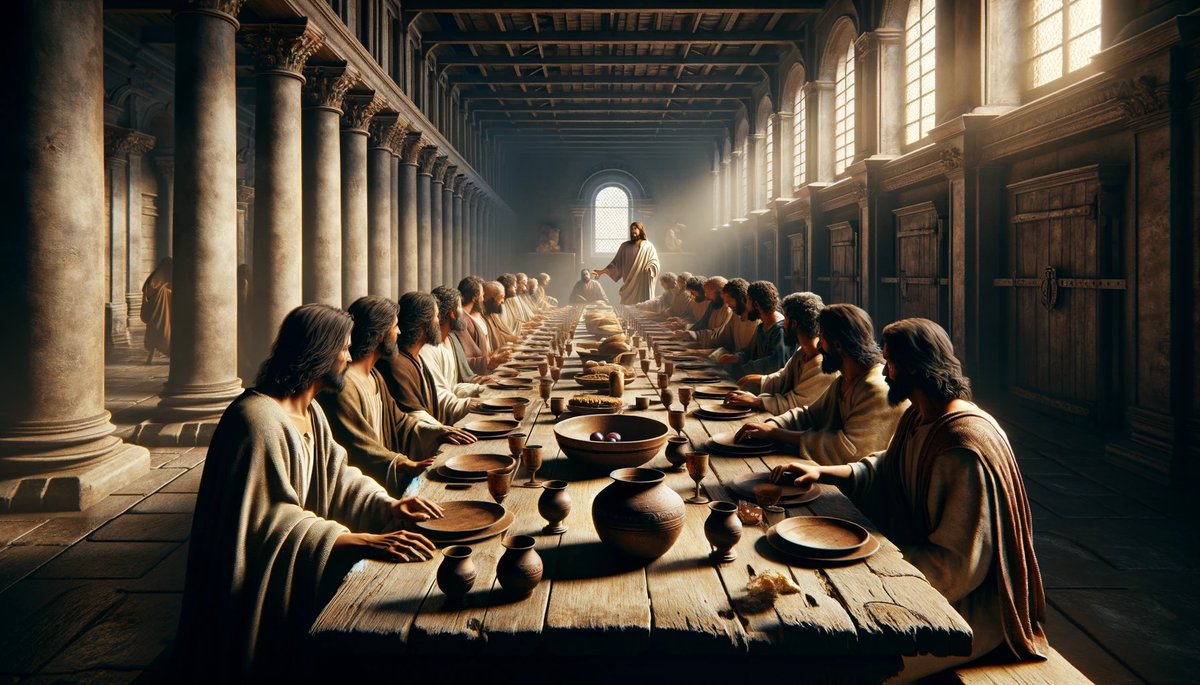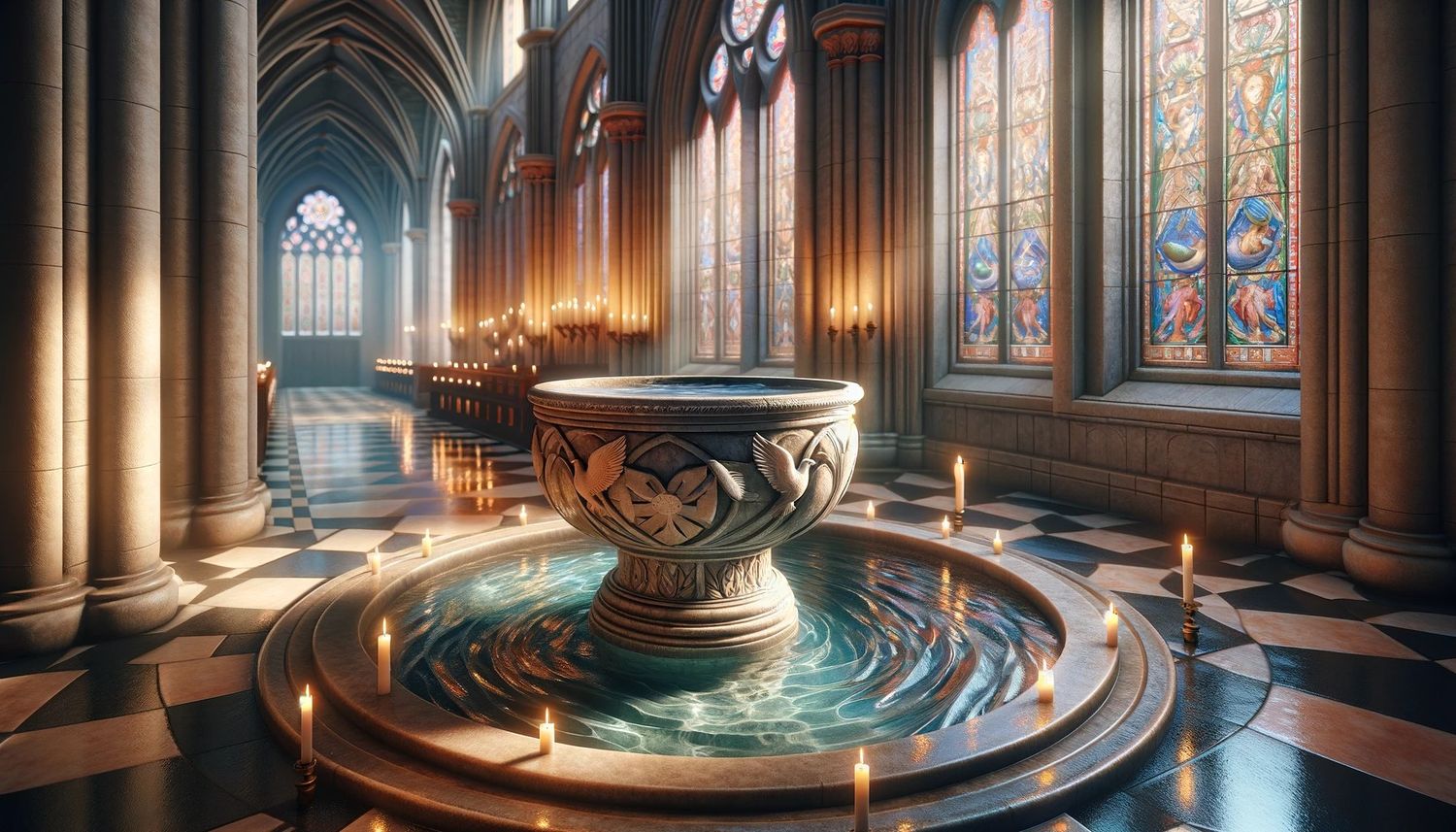Home>Arts and Culture>What Is The Central Space Of A Cathedral Called?
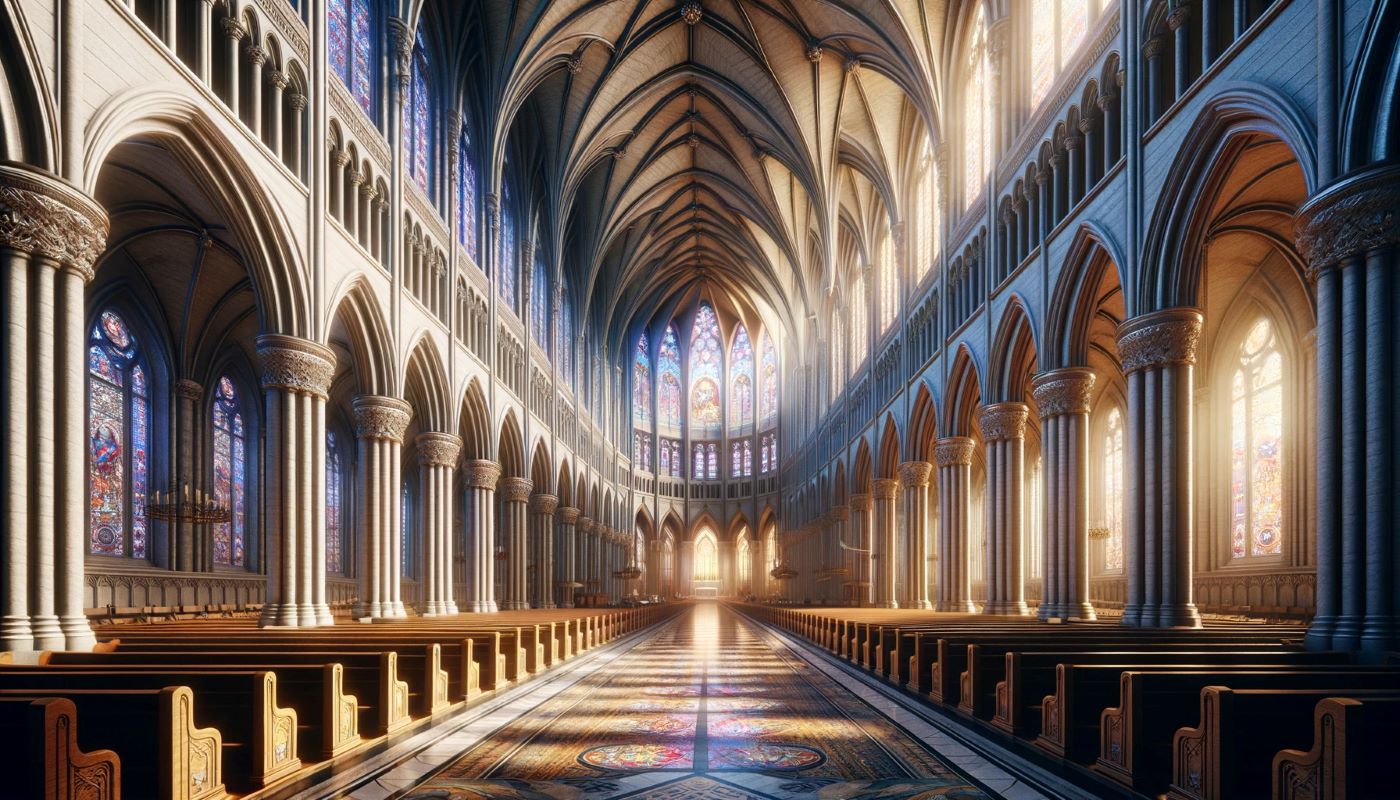

Arts and Culture
What Is The Central Space Of A Cathedral Called?
Published: February 16, 2024
Ericka Andersen, an editor at Christian.net, expertly merges digital strategy with content creation, focusing on faith and societal issues. Her communication skills enhance the platform's engaging narratives, fostering meaningful dialogue on belief's impact on society.
Discover the central space of a cathedral and its significance in arts and culture. Explore the architectural and historical importance of this sacred area.
(Many of the links in this article redirect to a specific reviewed product. Your purchase of these products through affiliate links helps to generate commission for Christian.net, at no extra cost. Learn more)
Table of Contents
Introduction
When you step into a grand cathedral, you are immediately struck by the sense of awe and majesty that surrounds you. The soaring ceilings, intricate stained glass windows, and ornate decorations all contribute to the overwhelming feeling of reverence and wonder. As you walk through the vast interior of the cathedral, you may find yourself wondering about the different parts of this sacred space and their significance.
Cathedrals are not just architectural marvels; they are also deeply symbolic and spiritual places. Each part of a cathedral has its own unique purpose and meaning, contributing to the overall experience of worship and contemplation. Understanding the layout and terminology of a cathedral can enrich your visit and deepen your appreciation for the artistry and spirituality embodied in these magnificent structures.
In this article, we will explore the central space of a cathedral and its various components. From the expansive nave to the intricate details of the apse, each element plays a vital role in shaping the sacred atmosphere of the cathedral. By delving into the architectural and historical significance of these spaces, we can gain a deeper understanding of the cultural and religious traditions that have shaped cathedrals throughout the centuries.
Join us on a journey through the heart of these extraordinary buildings as we unravel the mysteries and meanings behind the central space of a cathedral. Let's embark on a fascinating exploration of the architectural and spiritual wonders that await within these hallowed walls.
The Nave
The nave is the central and principal part of a cathedral, typically extending from the main entrance to the crossing, where the transept intersects. It is the area where congregants gather for worship, and its design reflects the emphasis on communal prayer and shared spiritual experience. The term "nave" is derived from the Latin word "navis," meaning ship, symbolizing the idea of the church as a vessel carrying believers on their spiritual journey.
Architecturally, the nave is characterized by its long, spacious hall, often flanked by rows of columns or piers that support the lofty ceilings above. The soaring height of the nave serves to draw the eyes and hearts of worshippers upward, evoking a sense of transcendence and awe. The play of light and shadow within this expansive space, filtered through stained glass windows or illuminated by flickering candlelight, adds to the ethereal ambiance that permeates the nave.
The layout of the nave is carefully designed to facilitate the congregation's participation in liturgical rituals and communal worship. The arrangement of seating, whether in the form of pews, chairs, or open aisles, is intended to create a sense of unity and shared purpose among the worshippers. The focal point of the nave is often the pulpit, where sermons are delivered, and the altar, where the Eucharist is celebrated, underscoring the central role of these sacraments in the life of the church.
In addition to its functional significance, the nave also holds symbolic meaning within the context of the cathedral. Its longitudinal axis, extending from the entrance to the crossing, represents the journey of faith, with the congregation progressing from the worldly realm towards the divine presence at the altar. The rhythmic repetition of columns or arches along the nave's length creates a sense of harmony and order, reflecting the spiritual harmony sought by worshippers.
Furthermore, the nave serves as a canvas for artistic and decorative elements that enrich the visual and spiritual experience of worshippers. Intricate carvings, elaborate frescoes, and sculptural adornments adorn the walls and ceilings, offering a visual narrative of religious stories and teachings. The combination of architectural grandeur and artistic splendor within the nave creates a multisensory environment that elevates the act of worship into a transcendent experience.
In essence, the nave stands as the beating heart of the cathedral, embodying the congregation's collective journey of faith, the architectural and artistic expression of divine beauty, and the sacred space where the earthly and the heavenly converge. As worshippers gather within its embrace, the nave becomes a sanctuary for shared devotion, contemplation, and spiritual renewal, fostering a profound connection between the human and the divine.
The nave's significance extends beyond its physical dimensions, encompassing the spiritual and communal dimensions that define the cathedral as a place of encounter with the sacred. It is a space where the faithful come together to seek solace, inspiration, and communion, uniting their voices in prayer and praise within the resplendent embrace of the cathedral's central hall.
The Transept
The transept, a defining feature of many cathedrals, intersects the nave at a right angle, creating a cross-shaped floor plan that symbolizes the crucifixion of Jesus Christ. This architectural element holds profound spiritual and symbolic significance, serving as a visual representation of the Christian faith's central narrative. The transept divides the cathedral into distinct sections, with the nave representing the earthly realm and the transept and its arms signifying the intersection of the divine and human realms.
The transept's layout often mirrors the proportions and grandeur of the nave, featuring its own vaulted ceilings, columns, and decorative elements. In some cathedrals, the transept is expanded to create a spacious and imposing cross-shaped space, emphasizing its role as a pivotal axis within the cathedral's overall design. This expansive area provides additional seating for worshippers and accommodates ceremonial processions, underscoring its functional versatility within the liturgical life of the church.
Architecturally, the transept's intersection with the nave creates a visual focal point, drawing the eye towards the center of the cathedral. This convergence of architectural lines and spatial dimensions reinforces the sense of harmony and balance, echoing the spiritual unity and interconnectedness embodied in the Christian faith. The transept's expansive windows, often adorned with intricate stained glass, suffuse the space with radiant light, infusing it with a transcendent luminosity that inspires contemplation and reverence.
Beyond its architectural significance, the transept holds symbolic resonance as a representation of the cross, the central symbol of Christianity. The arms of the transept extend outward, embracing the congregation and inviting them to contemplate the profound mystery of Christ's sacrifice. The transept's position at the intersection of the nave and the choir underscores its role as a bridge between the earthly realm of worship and the celestial realm of divine presence, embodying the Christian belief in the union of heaven and earth.
Furthermore, the transept often houses chapels dedicated to specific saints or religious themes, enriching the spiritual tapestry of the cathedral. These chapels serve as intimate sanctuaries within the larger sacred space, inviting worshippers to engage in private prayer, reflection, and veneration of revered figures in Christian tradition. The transept's chapels also showcase exquisite works of art, including altarpieces, sculptures, and religious artifacts, adding to the aesthetic and spiritual richness of the cathedral.
In essence, the transept stands as a pivotal axis within the cathedral, uniting architectural grandeur, symbolic depth, and spiritual resonance. Its cross-shaped form, expansive dimensions, and multifaceted significance contribute to the cathedral's overarching narrative of faith, inviting worshippers to contemplate the profound mysteries of Christian belief within its hallowed embrace. As visitors traverse the transept's expanse, they are enveloped in a sacred space that transcends the boundaries of time and place, inviting them to partake in the enduring legacy of spiritual devotion and artistic expression that defines the cathedral's central core.
The Crossing
The crossing, also known as the intersection of the nave and the transept, holds a position of profound significance within the architectural and spiritual framework of a cathedral. This central space serves as a focal point where the vertical and horizontal axes of the cathedral intersect, symbolizing the intersection of the earthly and celestial realms. The crossing embodies the meeting point of human aspiration and divine transcendence, encapsulating the essence of the cathedral's spiritual and architectural narrative.
Architecturally, the crossing often features a soaring central tower or dome, reaching towards the heavens and drawing the eye upward in a gesture of spiritual elevation. This vertical emphasis reflects the cathedral's aspiration to connect the earthly realm with the divine realm, inviting worshippers to contemplate the ineffable mysteries of faith and existence. The expansive dimensions of the crossing create a sense of openness and grandeur, evoking a feeling of awe and reverence as visitors stand at the convergence of the cathedral's primary axes.
The crossing's architectural design often incorporates intricate vaulting, ornate tracery, and decorative elements that accentuate its central role within the cathedral. The interplay of light and shadow within this space, filtered through stained glass windows or illuminating the expanse of the central dome, creates a transcendent ambiance that envelops worshippers in a sense of spiritual splendor. The crossing becomes a nexus of architectural beauty and symbolic depth, inviting contemplation and introspection within its resplendent embrace.
Symbolically, the crossing represents the meeting place of the human and the divine, embodying the Christian belief in the incarnation of Christ and the union of heaven and earth. The intersection of the nave and transept forms a cross-shaped floor plan, evoking the central symbol of Christianity and serving as a visual reminder of Christ's redemptive sacrifice. This sacred geometry infuses the crossing with profound spiritual resonance, inviting worshippers to meditate on the transformative power of faith and the promise of divine grace.
Furthermore, the crossing often serves as a platform for ceremonial rituals, processions, and liturgical events, underscoring its functional importance within the life of the cathedral. The central location of the crossing positions it as a focal point for congregational gatherings, emphasizing its role as a space for communal worship and shared spiritual experience. As worshippers converge at this sacred juncture, they become part of a living tradition that spans centuries, uniting their voices in prayer and praise within the cathedral's central core.
In essence, the crossing stands as a nexus of architectural grandeur, spiritual symbolism, and communal significance within the cathedral. Its intersection of vertical and horizontal axes, its embodiment of sacred geometry, and its role as a gathering place for congregational worship converge to create a space that transcends the boundaries of the physical and the divine. As visitors stand within the embrace of the crossing, they are invited to partake in the timeless dialogue between humanity and the divine, finding solace, inspiration, and communion within its hallowed precincts.
The Choir
The choir, situated beyond the crossing and often enclosed by a screen or railing, represents a space of heightened spiritual significance within the cathedral. This area serves as the domain of the clergy and the focal point for liturgical celebrations, including the chanting of psalms, recitation of prayers, and performance of sacred music. The term "choir" originates from the Latin "chorus," reflecting its association with the harmonious singing and musical expressions that resonate within its sacred confines.
Architecturally, the choir is distinguished by its elevated position, often raised above the nave and transept, creating a sense of prominence and sanctity. This elevated vantage point allows the clergy to preside over the congregation and lead the faithful in collective worship, underscoring the hierarchical and ceremonial aspects of the liturgical tradition. The choir's layout typically includes seating for the clergy, such as stalls or seats arranged in a semicircular or rectangular formation, emphasizing the communal nature of their spiritual role within the cathedral.
The choir's proximity to the altar, often positioned at the eastern end of the cathedral, underscores its central role in the celebration of the Eucharist and other sacraments. The clergy's presence within the choir signifies their direct engagement with the sacred rituals and their role as mediators between the congregation and the divine. The choir screen, a decorative partition separating the choir from the nave, serves as a symbolic boundary between the sacred realm of the clergy and the communal space of the congregation, emphasizing the distinction between the roles and responsibilities of each group.
Symbolically, the choir embodies the transcendent aspirations of the human spirit, aspiring towards divine harmony and spiritual elevation. The music and liturgical chants emanating from the choir create an ethereal atmosphere, elevating the act of worship into a sublime expression of devotion and praise. The acoustics of the choir space, often enhanced by its architectural design and placement, contribute to the resonant beauty of sacred music, enveloping the cathedral in a symphony of spiritual resonance and celestial splendor.
Furthermore, the choir often features ornate furnishings, such as intricately carved stalls, lecterns, and liturgical objects, reflecting the artistic and symbolic richness of this sacred space. Elaborate carvings, decorative motifs, and religious iconography adorn the choir's furnishings, creating a visual tapestry that complements the spiritual significance of the space. The interplay of light and shadow within the choir, filtered through stained glass windows or illuminated by candlelight, adds to the transcendent ambiance that permeates this sacred enclave.
In essence, the choir stands as a sanctuary of spiritual harmony, artistic expression, and communal devotion within the cathedral. Its elevated position, ceremonial function, and symbolic resonance converge to create a space that transcends the boundaries of the earthly realm, inviting worshippers to partake in the timeless tradition of sacred music and liturgical celebration. As the clergy and choristers gather within the embrace of the choir, they become custodians of a living tradition, weaving together the threads of faith, music, and spiritual aspiration within the resplendent tapestry of the cathedral's central core.
The Apse
The apse, a semicircular or polygonal projection at the eastern end of the cathedral, serves as a focal point for the celebration of the Eucharist and embodies the culmination of the cathedral's architectural and spiritual journey. This sacred space, often adorned with ornate decorations and symbolic imagery, holds profound significance within the liturgical and artistic traditions of the cathedral.
Architecturally, the apse's semicircular form creates a sense of enclosure and focus, drawing the eye towards the altar and the central axis of the cathedral. The apse is often flanked by radiating chapels, known as the ambulatory, which provide additional space for devotional activities and veneration of sacred relics. The soaring vaults and expansive windows of the apse create a luminous and ethereal atmosphere, suffusing the space with a transcendent radiance that elevates the act of worship into a sublime experience.
Symbolically, the apse represents the celestial realm and the divine presence, serving as a visual and spiritual focal point for the congregation. The placement of the altar within the apse underscores its role as the symbolic center of the cathedral, where the Eucharist is celebrated and the transformative mystery of Christ's sacrifice is commemorated. The apse's position at the eastern end of the cathedral aligns with the traditional orientation towards the rising sun, symbolizing the dawning of spiritual enlightenment and the promise of divine renewal.
Furthermore, the apse often features elaborate frescoes, mosaics, or paintings depicting scenes from the life of Christ, the Virgin Mary, and revered saints. These artistic embellishments create a visual narrative that enriches the spiritual experience of worshippers, inviting them to contemplate the sacred stories and teachings embodied in the cathedral's decorative elements. The interplay of light and color within the apse, accentuated by the filtered glow of stained glass windows, adds to the transcendent ambiance that permeates this sacred enclave.
In essence, the apse stands as the radiant heart of the cathedral, embodying the culmination of the congregation's spiritual journey and the convergence of divine grace within the sacred space. Its semicircular embrace, symbolic depth, and artistic richness converge to create a space that transcends the boundaries of the earthly realm, inviting worshippers to partake in the timeless tradition of contemplation, devotion, and spiritual communion within the resplendent tapestry of the cathedral's central core.
